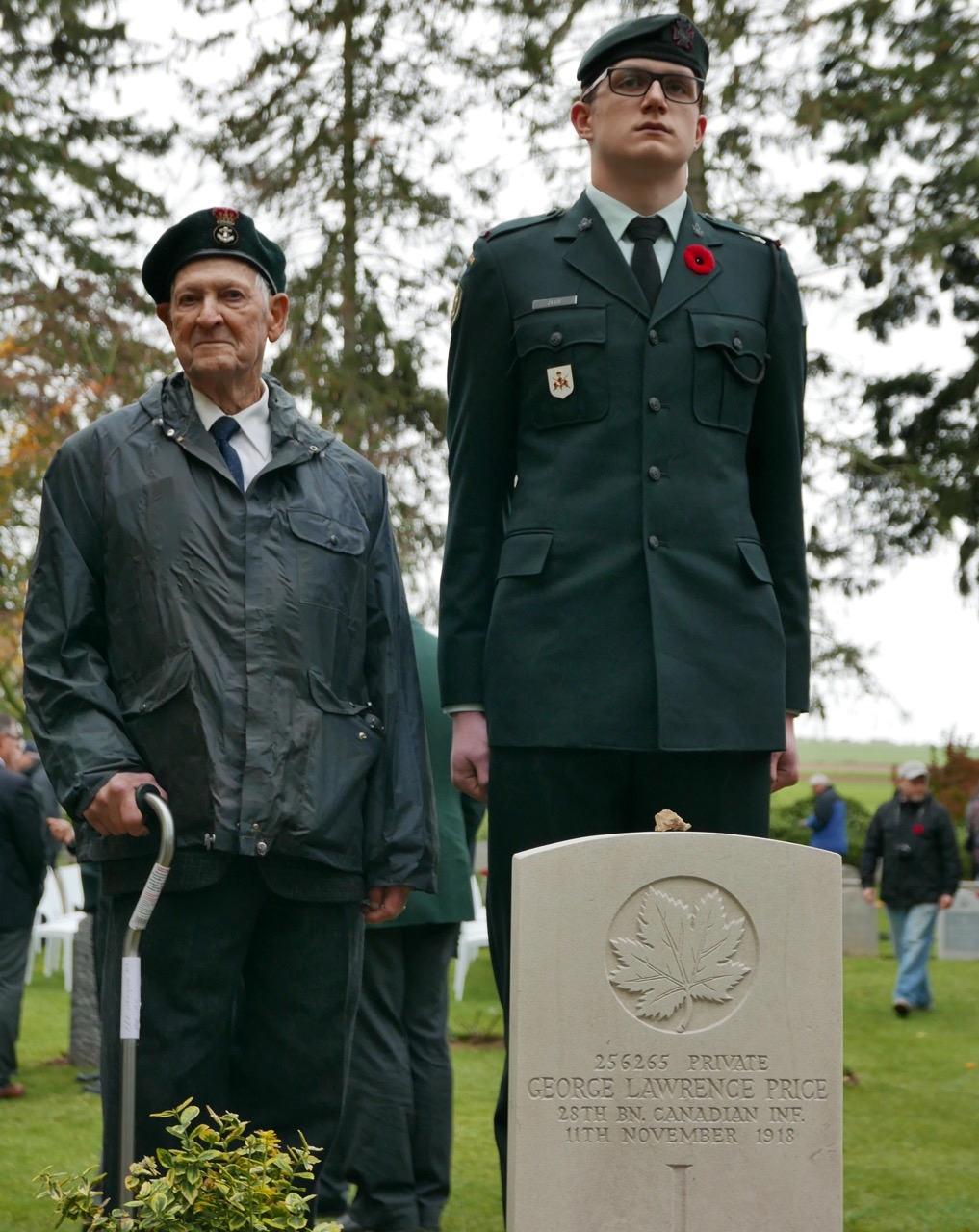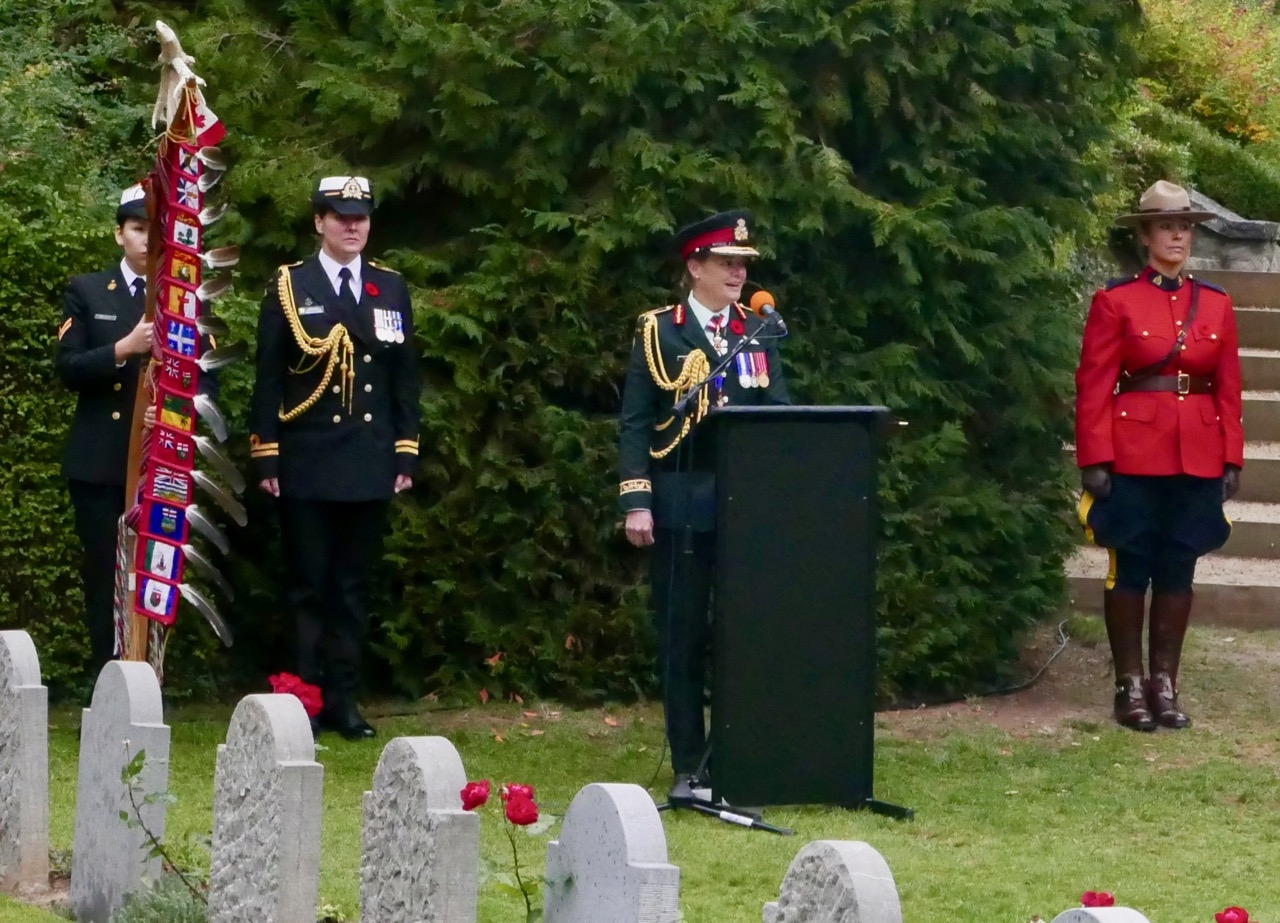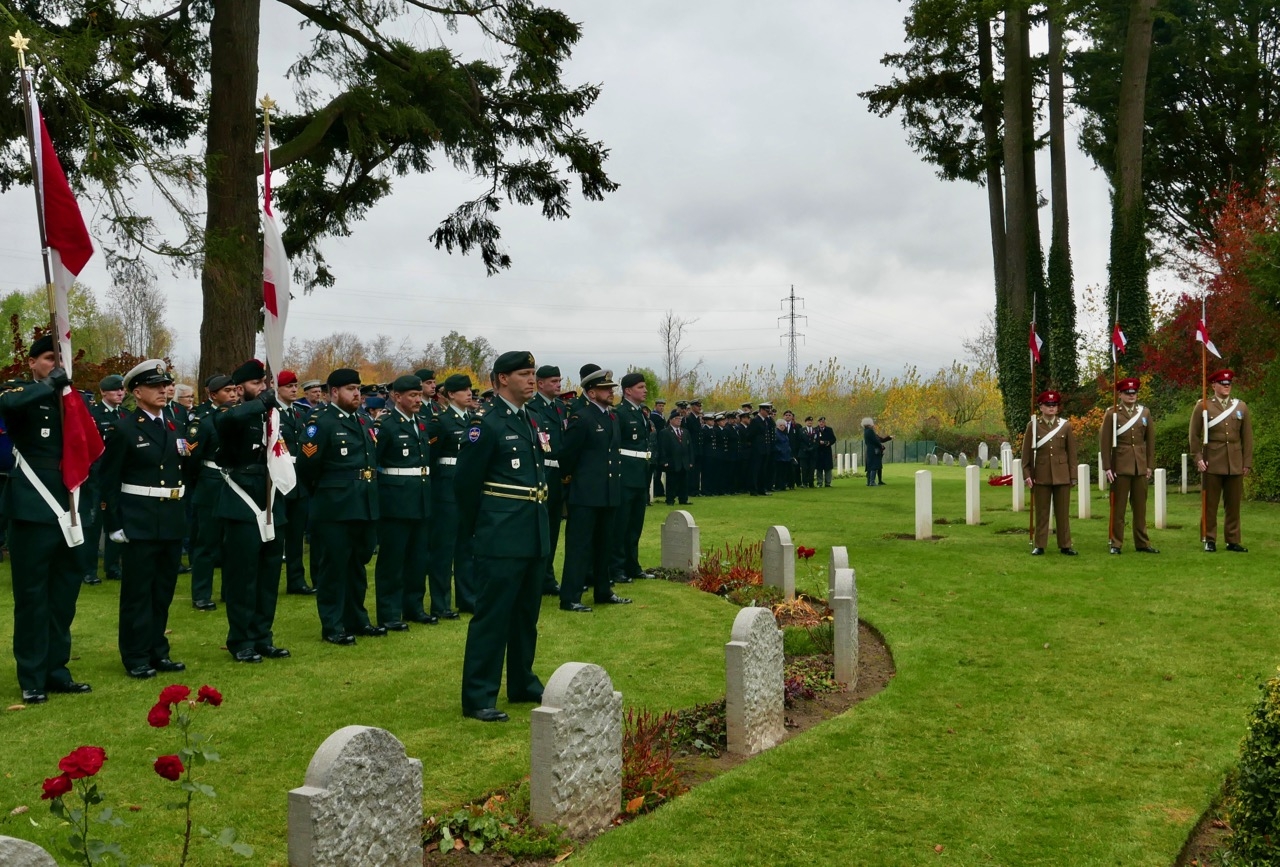The first and the last British and Commonwealth soldiers killed in action in the First World War have been remembered in ceremonies marking the 100th anniversary of the 1918 Armistice at the military cemetery in Belgium where they lie together.
Once again in the WW1 Centenary, it was fitting that St Symphorien Cemetery, the last resting place of almost equal numbers of British and German troops on the outskirts of Mons, should be the setting for international commemorations.
Mons was where the British Expeditionary Force and the German Army clashed for the first time on the Western Front in August 1914. And more than four years later, after a conflict that had spread far and wide, the city was liberated by Canadian troops, allied to British forces, at the very moment the Armistice was being agreed in the early hours of 11 November 1918.
Those events are reflected on the headstones of the men buried at St Symphorien. John Parr, the first British soldier to be killed on 21 August, rests opposite George Ellison, a veteran of the first Battle of the Mons, who was the last of his compatriots to die on a Great War battlefield. And just a short distance from them lies George Price, shot by a sniper two minutes before the ceasefire took effect, becoming the last Canadian and Commonwealth soldier to die in action.
British Prime Minister Theresa May visited this tranquil woodland cemetery, accompanied by her Belgian counterpart Charles Michel, to lay wreaths at the graves of John Parr and George Ellison on Friday November 9.
Mrs May said: “That their graves lie opposite each other is a fitting and poignant symbol that brings home the eternal bond between them, and every member of the Armed Forces who gave their lives to protect what we hold so dear.”
The Prime Minister then travelled to France, to join President Macron for another ceremony at the Thiepval Memorial on the Somme. The two leaders laid a wreath specially made for the Armistice Centenary, combining poppies and Le Bleuet, the British and French national emblems of remembrance.
 George Barkhouse, nephew of George Price, with a Canadian soldier standing in tribute at his uncle’s grave (Photo: Centenary News)
George Barkhouse, nephew of George Price, with a Canadian soldier standing in tribute at his uncle’s grave (Photo: Centenary News)
Then on the following day, November 10, Canada hosted an international service of remembrance at St Symphorien, where representatives of the nations involved in the First World War have solemnly gathered twice before, at the start of the WW1 Centenary in August 2014.
The ceremony opened, on a grey autumn morning amid the first hints of rain, with family members paying personal tributes at the graves of George Ellison and George Price. Among them was Price’s 91-year-old nephew, George Barkhouse.
A wreath was also laid on the grave of Corporal Reinhold Dietrich, a German soldier killed in the last days of the war, on 28 October 1918.
More than 500 troops are buried or commemorated at St Symphorien, a cemetery created by the German Army for men of both sides after the first battle of Mons on 23/24 August 1914. Of these, 249 are from the Commonwealth and 284 are German. The cemetery remained in German hands for the rest of the war, passing to the Imperial War Graves Commission – now CWGC – after the Armistice.

Canada’s Governor-General, Julie Payette, drew an inspirational lesson from the cemetery’s distinctive origins, as war raged in 1914, during her address to an audience that included the British, Canadian and German ambassadors, representatives of the city of Mons, the Commonwealth War Graves Commission, forces’ veterans and members of the public.
“It is so fitting that the landowner donated this land for a final resting place, on one condition: that the dead from both sides be buried together, with equal respect. And it is important that we are here together to pay our respects and that from now on, we strive to work together.”
Drawing on her experiences as a former astronaut, Payette emphasised the importance of countries cooperating to resolve their differences.
“I have seen incredible things that people can do when they decide to join forces. What is amazing about the International Space Station is that it has been built by nations that 100 years ago were fighting each other on these very fields.”
The First World War had a profound impact on Canada, the Governor General said. Hundreds of thousands of soldiers crossed the Atlantic to fight, of whom 66,000 did not return. More than 170,000 were wounded.
Julie Payette finished her speech with an appeal: “100 years later, in their memory, let us never repeat this. Let us work together to build a better world for our children and their descendants.”
A note on the last WW1 soldiers killed in action:
George Ellison was shot while on patrol in Mons, 90 minutes before the Armistice took effect on 11 November 1918. His military career spanned the First World War. Having previously served in the British Army, he was recalled at the start of hostilities in 1914, aged 36. After fighting at the first Battle of Mons, he later saw action at Ypres, Loos and Cambrai, before returning a final time to Mons. In civilian life, he was a miner from the Yorkshire city of Leeds. A new plaque commemorating George Ellison, paid for by public subscription, has been unveiled in his memory at Leeds railway station.
The last French soldier to die was Augustin Trébuchon, shot 15 minutes before the November 11 ceasefire. He too was a veteran of the early battles of the First World War, having joined the army in August 1914, Aged 40, he was killed in clashes with German troops near Sedan, and is buried at Vrigne-Meuse.
George Price, the last Canadian and Commonwealth soldier killed in action, was an agricultural worker conscripted into the forces in October 1917. He was shot at 10.58am on 11 November 1918, two minutes before the Armistice. A new memorial was unveiled to him after the St Symphorien service, in the village of Ville-sur-Haine – near Mons – where he fell 100 years ago.
Henry Gunther, an American soldier deployed on the Meuse, is believed to be the last Allied fatality of the fighting in World War I. He was killed one minute before the Armistice. After the war, his remains were returned from France for burial in Baltimore, Maryland.
 Canadian & British guards of honour at Symphorien Cemetery. George Ellison’s grave is behind the soldiers of the Queen’s Royal Lancers (Photo: Centenary News)
Canadian & British guards of honour at Symphorien Cemetery. George Ellison’s grave is behind the soldiers of the Queen’s Royal Lancers (Photo: Centenary News)
See also in Centenary News:
We reported from the St Symphorien commemorations, attended by King Philippe of the Belgians, the Duke and Duchess of Cambridge and Prince Harry, on 4 August 2014 marking the 100th anniversary of the start of the First World War and Britain’s entry into the conflict – and also events remembering the centenary of the first Battle of Mons, held later that month, on 23 August 2014.
Reporting from Mons by CN Editorial Team
Images: Centenary News
